Hybrid of cherries and sweet cherries Miracle Cherry
Miracle cherry is a variety (hybrid) of cherries and sweet cherries, which are called “duke”. It is valued for its large and juicy fruits, distinguished by dessert and sweet pulp. To get a good harvest, it is important to follow the rules of planting and care, as well as know the features and characteristics of the crop. In the article we will provide a detailed description of the Miracle Cherry variety. Let's find out why Russian gardeners love it and what is the secret of a stable and rich harvest.
Description and characteristics of the cherry-cherry hybrid Miracle Cherry
Cherries and sweet cherries belong to the same type of fruit plants. Thanks to crossing varieties of cherries and sweet cherries, breeders have invented an easy-to-care and productive hybrid (duke) called Miracle Cherry.
It is grown in southern regions with mild winters and warm summers. In appearance, dukes are more reminiscent of cherries than cherries.

Description of the tree and fruits
The tree is medium-sized, the crown is identical to the cherry tree, and the type of branching is similar to the cherry tree. The shoots are straight and smooth, the color is dark brown. The plant's buds are large and dense. The leaves are large, dark green, similar to cherry. The flowers appear on short stalks, are large, and grow in groups of 5-8.
The fruits are large, the weight of one is from 8 to 10 g. The shape is spherical, the surface is smooth and shiny, the color is dark red. The skin is dense, so the fruits are shelf-stable and suitable for transportation. The taste is delicate, dessert, the flesh is sweet without bitterness or sourness.The harvest is also valued for its pleasant berry aroma. According to the tasting scale, Duke is rated 4.8 points out of 5.
Frost resistance and drought resistance
Miracle cherry is a frost-resistant crop that can withstand temperatures down to -28°C. Medium drought resistance. When growing Miracle Cherry in the middle zone, it is recommended to provide additional nutrition to strengthen the plant’s immunity. Otherwise, it will not withstand a long and cold winter. Gardeners plant seedlings in windless areas; Miracle Cherry does not tolerate drafts and gusty winds. Regularly add minerals to the soil feeding - ammonium nitrate, superphosphate, potassium salt.
If dukes are planted in the Moscow region, the seedlings are provided with loose and light soil. This can be a pre-prepared mixture of garden and purchased soil. It is important to monitor the level of moisture - Miracle cherry is tolerant of lack of watering, but it cannot do without moistening the soil.
Resistance to diseases and pests
Immunity to diseases is strong, but if not done correctly care Miracle cherry is affected by moniliosis. This is a common fungal disease of garden crops, in which shoots and leaves are first affected, and then a dense brown coating appears on the fruits. Moniliosis develops quickly in humid and hot weather and is common in the middle zone.
Among the pests, the cherry fly is noted - the insect is common in the southern regions. The fly feeds on the juice of the fruit and lays eggs in the pulp. For prevention, gardeners regularly loosen the tree trunk and spray landings drugs "Actellik" or "Zolon".
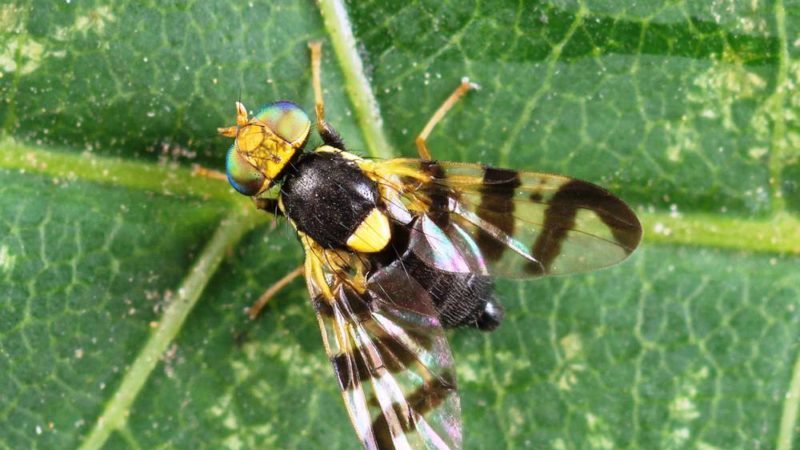
Pollinators
The plant is self-sterile, so gardeners plant other varieties of cherries nearby.Cross pollination provides the greatest yield. The cherries Annushka and Sestrenka, Priusadennaya and Yaroslavna are suitable as pollinators.
To attract pollinating insects, it is recommended to spray trees with a weak honey solution. To prepare it, you need 1 liter of water and 10 g of honey. Of the professional preparations, gardeners use “Ovary”.
This is interesting:
Description of self-fertile cherry varieties for the middle zone and Samara region
Flowering and ripening period
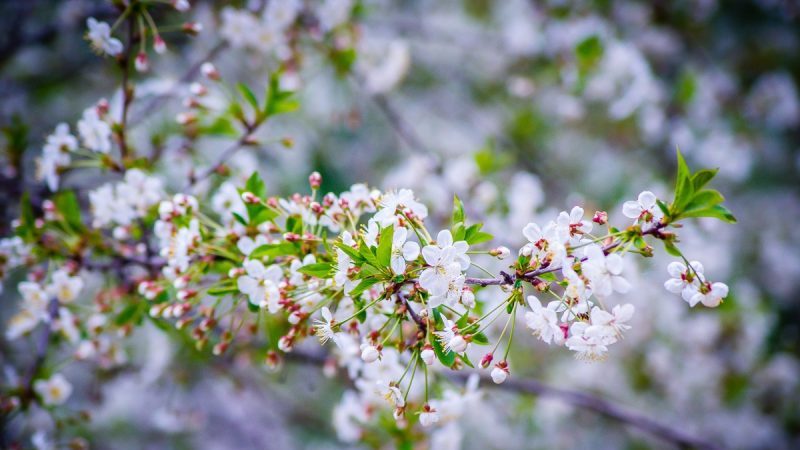
Miracle cherries are early-fruiting and produce their first harvest 2-3 years after planting. If frosts are expected during the flowering period, the plantings are watered generously with superphosphate. Duke blooms from late May or early June, the fruits set together. The Miracle Cherry ripens by June 25-30.
Attention! One Miracle Cherry tree annually gives gardeners from 10 to 15 kg of harvest.
Advantages and disadvantages
The advantages of duka include stable yield, tasty and juicy pulp, and attractive commercial qualities of the fruit. When planted correctly and following the rules of care, the plant is rarely affected by disease. Miracle cherries are good both fresh and processed. Juicy and healthy desserts and drinks are prepared from the fruits.
The disadvantage of Miracle Cherry is self-sterility. Also, Duke is not suitable for growing in the northern regions of Russia; it is recommended to plant it in the Moscow region or in the south. Due to temperature changes, the buds freeze, which negatively affects the amount of harvest.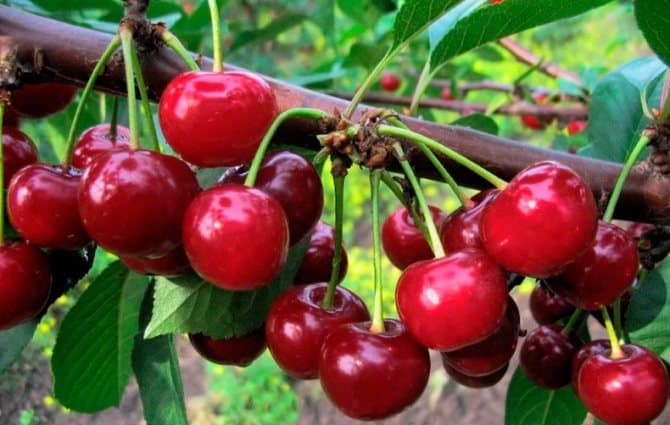
Duke features
To get a good harvest, other varieties of cherries are planted next to the duke. Some gardeners may have difficulties - planting and caring for cherries differs from the rules for caring for cherries. In this case, pollination on trees must occur simultaneously, which is difficult to achieve. If the garden is small, there is not always room for planting an “extra” cherry tree.
When flowering, the duke forms a thick and lush crown, so this plant also performs a decorative function. However, Miracle Cherry grows quickly and needs regular pruning and crown shaping.
Planting seedlings
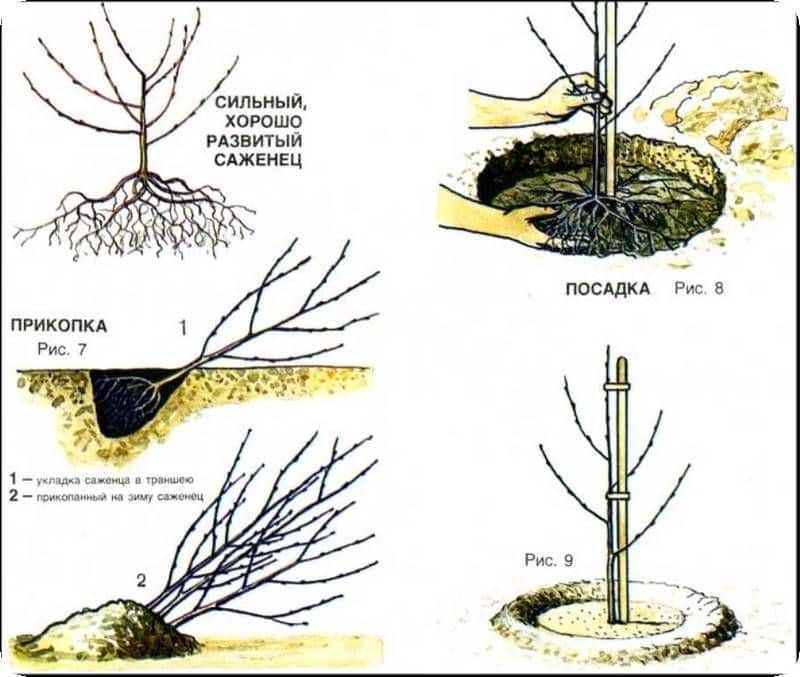
Planting cherry is similar to planting other fruit crops. The best time for this is early spring. If you plant Miracle Cherry in the fall, there is a chance that the buds will freeze in winter, especially in the middle zone. Gardeners prepare seedlings in advance. The plant should be elastic and flexible, healthy in appearance. Spots and cracks on seedlings, traces of rot or pubescence are unacceptable. All this indicates improper storage of planting material or disease. Gardeners recommend purchasing seedlings only from trusted places.
Landing instructions
The landing site must be heated. In the fall, the soil is dug up, cleared of grass and leaves, and compost or manure is added for the winter. To improve the condition of the soil, add clean sand or sawdust to the soil. Further landing instructions:
- Holes are made in the ground with a depth of 60 cm and a diameter of 50 cm. A distance of at least 5 m is left between the holes.
- A seedling is dug into the hole, covered with earth, and a wooden peg is placed nearby.
- The seedling is tied to a peg and the tree trunk is watered generously with water at room temperature.
- Mulch the seedling with sand, hay, sawdust or leaves.
Subtleties of further care

Caring for Duke Miracle Cherry includes timely watering, fertilizing, protection from diseases and pests, pruning and crown formation. The yield, taste and commercial quality of the fruit depend on these procedures.
Watering intensity
2-3 weeks after planting, the seedlings are watered abundantly with warm, settled water. The stream is directed to the root circle or to the base of the trunk, bypassing young shoots. After a month, the duke is watered less frequently, about once a month. From 20 to 40 liters are consumed per plant, depending on the age of the Miracle Cherry. In rainy weather, the amount of water is reduced, as waterlogging leads to the development of fungal diseases.
Attention! Before watering, loosen the soil. This makes the soil breathable, water does not evaporate from the surface of the earth, but gets deep to the roots. Loosening also prevents the spread of insect pests.
Soil fertilization
In the southern regions, Miracle Cherry consistently bears fruit without regular fertilizing. This is one of the advantages of duka; caring for the plant becomes even easier. In the middle zone of the country, fertilizers are mandatory - they affect fruit set, flowering, yield and ripening time. Gardeners use mineral and organic fertilizers - manure, mullein infusion, double superphosphate, potassium mixtures. Once a season, foliar feeding is carried out - the plant is sprayed with a weak honey solution.
Pruning and crown formation
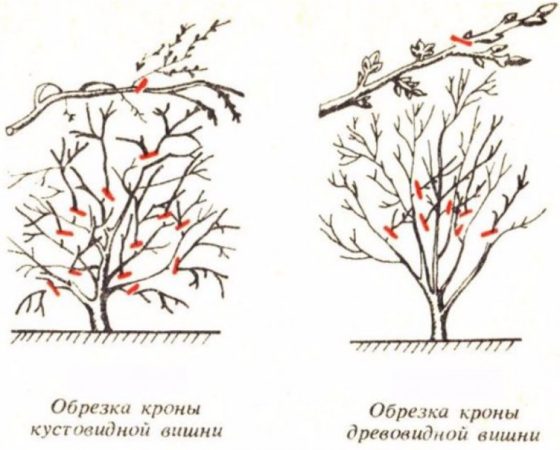
The crown is formed for the first time immediately after planting the seedling in the garden plot. The trunk and top are cut at 60 cm. In the second year, the shoots are cut by 30% of the entire length. Thanks to pruning, the yield of the Miracle cherry and the weight of the fruit increase. 5 years after planting, the duke is rejuvenated - the shoots are cut off at the level of a 4-year-old tree.If you do not prune and shape, the shoots will grow long and tangled, which will negatively affect the yield.
Disease and pest control
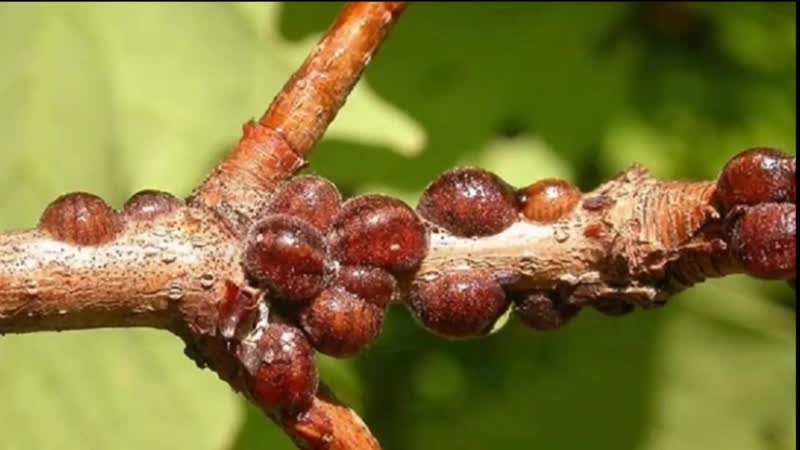
To avoid the appearance of ticks, flies and slugs, gardeners regularly take preventive measures. The appearance of mites is prevented by spraying with a solution of copper sulfate; they are carried out in dry and windless weather. Loosening the soil and applying mineral fertilizers help in the fight against slugs. To avoid the appearance of flies, summer residents regularly spray the Miracle Cherry with a solution of Bordeaux mixture.
Attention! Voles love to chew cherry bark. They reproduce quickly in winter and eat the bark and underground parts of the tree. Rodents are repelled by wood ash, kerosene sawdust, and peat chips. The compositions are placed in a tree trunk circle and trampled into the ground. The procedure is carried out at the end of autumn.
To combat diseases, gardeners use copper oxychloride sprays (40 g of the drug is required per bucket of warm water). The products include “Zineb” or “Topsin-M”. Spraying is carried out in accordance with the recommendations on the packaging. Purchase medications from gardening stores.
Harvest and storage

The ripeness of the Miracle Cherry is recognized by visual signs: the fruits become dark red, the peel becomes smooth and shiny, the stalk turns green. Tear the berries carefully, as damage to the shoots can cause a decrease in yield in the future. Sometimes gardeners use special scissors to pick berries. For fresh consumption, Miracle cherries are harvested 2-3 days before ripeness, for transportation - 5-7 days.
Gardeners most often eat the fruits fresh or immediately send them for processing.Miracle cherries are used to make compotes and preserves, juices and jams. The sweet and aromatic berry is also used to make dumplings and casseroles, salads and pancakes, sauces and healthy desserts. Miracle cherry is suitable for dietary nutrition, rich in vitamins and microelements.
Reviews from gardeners about Duke Miracle Cherry
Reviews about the Miracle Cherry are both positive and negative.
Tamara Konstantinovna, Krasnodar region: “The miracle cherry is truly a miracle! I have never seen such large and tasty fruits. I’ve been harvesting for the fourth year in a row, and I’m very pleased. The plant does not cause any trouble and does not get sick. Last year I collected 12 kg of fruit from the tree. I recommend to all".
Pavel, Moscow region: “The miracle cherry has been growing on my site for a long time. The harvest is different every year, the maximum was 8 kg. I like the taste, pleasant, cherry-cherry. I eat cherries only fresh, as they are not suitable for storage and transportation. Occasionally, the plant gets sick with coccomycosis, especially during times of frequent rain.”
Conclusion
The result of crossing cherries and cherries is called Miracle Cherry. The plant is planted in spring on warm and clean soil. Cherry varieties are planted nearby - they are required for cross-pollination and fruit set. After planting, the seedlings are watered abundantly with warm, settled water.
In the future, gardeners regularly fertilize the Miracle Cherry, spray it to protect against diseases and loosen it. Particular attention is paid to pruning shoots and crown formation. The harvest ripens at the end of June. The fruits are juicy and sweet, with a thick, dark red skin. They are eaten fresh or used in cooking.